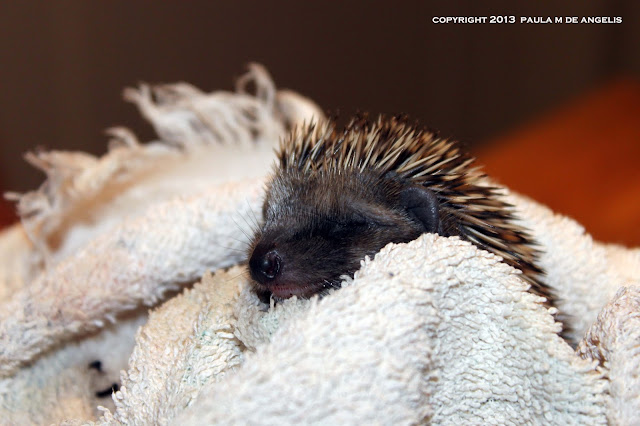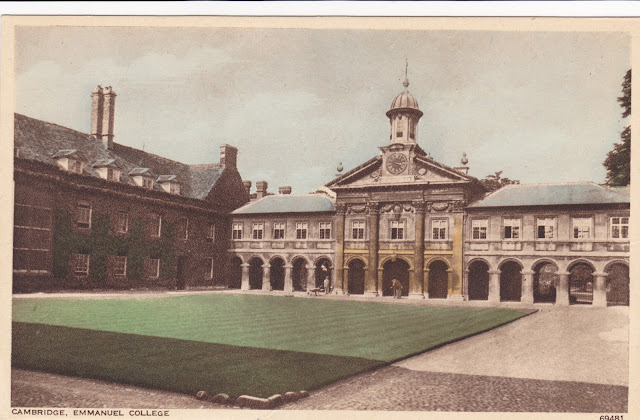I subscribe
to a number of email publications having to do with the business world and its
ever-fascinating opinions, buzzwords, mantras and current trends. Nothing too
complicated; most articles debate the following types of issues: qualities of
good leaders, how to break through the glass ceiling, is there a glass ceiling
for women, have we achieved gender equality, how women should act in a
male-dominated profession, and so on. The new mantra for women on the way up is
apparently ‘Fake it until you make it’; this is proffered as a way for women to
feel ok about the fact that there are a number of men in top-level positions
who are not qualified for them, but since they act as though they are (they
fake their competence and/or readiness), they get promoted whereas women don’t.
So if men do it, it’s ok for women to do it too. This expression makes me
cringe whenever I hear it uttered, at least in the way it’s currently used. It
conflicts with nearly every moral principle I was taught since I was a young
child. We were taught to be honest, forthright and not to lie. We were
certainly not taught to ‘fake’ anything. Fakers were frowned upon; if you look
up the word ‘faker’, some of the synonyms are liar, pretender, fraud, phony,
pretender, and impostor. Sorry, but these are not the type of personality
descriptions you want attached to you, not in the business world, and
definitely not in the academic research world. We were taught to work hard at
whatever course of study we chose to pursue, and in that way, we would achieve
success in our chosen profession. And if our eventual goals were to be the boss
or leader of a department, for example, we accepted that we had to earn that position; that it would not be
handed to us in our twenties or early thirties without having earned it. And by
earning it, I mean, working your way up from being a project and/or team leader
with responsibility for one or two people, to a larger project with responsibility
for a few more people, and so on. Slow but steady progress up over. In this
way, you gained the necessary emotional intelligence as well as the
professional qualifications necessary to assume a leadership position. So that
perhaps after ten or fifteen years in the workforce (closer to thirty-five or forty
years old), you could be considered qualified to lead a large team of people or
even a department. At this point, there would be no doubt that you were
qualified for the leadership position; there would be no need to ‘fake’
anything.
Nothing is
worse than ‘feeling/knowing’ that you don’t measure up or don’t fit the
criteria necessary to do a good job; I have felt that way once in my life, when
I was elected student council president in my senior year of high school. I was
totally unprepared for the job, naive, not a spontaneous idea-maker, and not
particularly social. But I was the smartest student in my class, and that was
enough to get me nominated. Enough people had faith in my abilities such that
they voted for me. But I lacked faith in myself and my abilities, and I could
not fake my way through that year. I cannot say that I failed at the job, but I
did not succeed at it either. I walked around with a constant knot in my
stomach, worrying about how lousy a job I was doing, about my lack of
spontaneous creativity and ability to pull a team together with inspiring words.
I do not remember that time as enjoyable; it was a stress I could have done
without. I should have said no to the nomination, but I did not, and I don’t
know why. Part of saying yes was out of a sense of duty. Many years later, I
understand that this type of position was simply not a good fit for me; I did
it, but found no joy in the job. Nothing is worse than feeling that the eyes of those you lead or those who look up to you
are constantly upon you, waiting for you to slip up so they can say ‘I told you
that you weren't good enough, smart enough, confident enough, etc.’ This is how
you feel; the reality may be quite another story. Most people probably wish you
well and don’t think much more about it. They’re certainly not
overly-preoccupied with whether you succeed or fail; they have enough to do in
their own lives. Nevertheless, the fact remains that I was not qualified for the
job. Several years later, I experienced the opposite. I got a summer job that I
mastered with ease; I was hired to ease the backlog of returned orders of pens
and pencils whose logos were misspelled or wrong. We were a group of about ten women, working in
the returned-goods department; our jobs were to tackle the returns, figure out
the mistakes, and send the orders on for re-processing. I loved this summer job.
I got to work mostly alone (my preference in most jobs) on the tasks at hand—dealing
with the processing of returned orders and the requisite associated paperwork.
Once I learned the rudiments of the job (which forms to file and where they
should get sent), it was clear sailing from thereon. It was a simple job, but
one that instilled confidence because you knew what to do and when to do it,
and you got the necessary feedback (good work, or work harder). The department
head took notice of me when I managed to clear my desk of the hundreds of
returns assigned to me within a few weeks as well as to motivate the ladies in
my department to plow through the backlog and get it done. We hung up posters
with the numbers of ‘how many returns down and how many to go’; that sort of
thing. We made it and helped the company out of a real tight spot. At the end
of the summer, I was offered a full-time job as leader of that department; I
was nineteen years old. I would have reported to the man who noticed my work,
and would have replaced the woman (in her mid-thirties) who had the position
(they would have fired her and instated me). The job would have been a
springboard to a career in business. But I did not feel that I was at all ready
to lead a department at nineteen years of age; I had no real people skills in
the sense of knowing how to deal with different personalities in the workplace.
I was ‘book-smart’ but not ‘people-smart’. I am fairly sure that I would have
been an unprepared and nervous leader, in short, not a good leader at that time.
I chose rather to fulfill my degree in science, and ultimately chose research
science as a profession. I did not feel like an impostor in my little summer
job, but I might have felt like one had I said yes to taking on department
leadership at that age. I don’t feel like an impostor in research either. My
view is that you have to like the work involved, but also feel that you can
master it. Additionally, you have to have bosses/leaders who give feedback and
constructive advice, and who are honest with you about your chances of
succeeding in that profession. You have to be able to trust their motives where
your future is concerned. These types of people seem to be at a premium these
days.
I know that
this phrase arose as a way for employees, mostly women, to deal with and
overcome feeling like impostors in their positions. The impostor syndrome seems
to be widespread among highly-educated intelligent women from what I read;
something that strikes me as quite irrational. But does faking feeling
successful make you feel better about yourself when you feel like an impostor? Does
it make you do a better job? And just because a number of men do this, do women
need to do it? What I guess I am saying is that if you feel like an impostor in
your job 100% of the time, perhaps your brain and heart are telling you
something important that you should listen to—that maybe you’re in the wrong
job or wrong profession. Nevertheless, I think we need to reevaluate this
expression and stop using it to falsely bolster confidence, especially where women
are concerned. Perhaps a better way to phrase it would be: ‘Visualize mastering
what you work so hard at. Visualize succeeding at it. Visualize yourself doing
it in your mind’s eye. Visualize your impact on those around you’. And if your
mind’s eye cannot ‘see’ you doing it with a fairly high degree of confidence,
rethink your goals. If you feel only dread and fear about being at the top or
doing what it is you think is expected of you, is it worth it? There’s nothing
worse than ‘arriving’, only to wonder, ‘what do I do now that I've arrived?’ ‘Making
it’ is not a goal in and of itself, no matter how much ‘faking’ is involved;
there has to be more substance to the goal. What do you want to do with the top
position, and why? Do you want to help your company and your employees, or just
promote yourself and your career? I think those questions are worth exploring
and answering, and will go a long way toward making you feel like you have the
right to be where you are, that you've earned that right, and that you go
forward with confidence and the smarts necessary to do a good job. Because
there are too many men in top positions who have no business being there; who
are miserable leaders and who do not know how to listen or to communicate with
their employees. These men have risen to the level of their incompetence, which
in some cases is quite high within an organization. I don’t think we need more
bad leaders in the form of women who are just like these men. I’m looking for
real leadership, inspiring and competent leadership; I’ll take a
truly-qualified, honest, humble man or woman over a faker any day.





















































